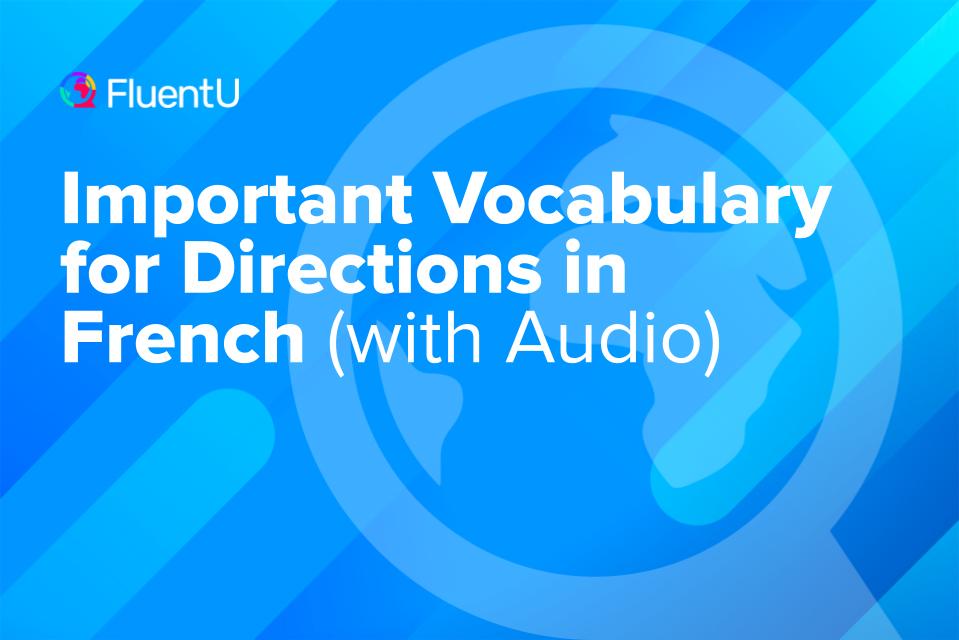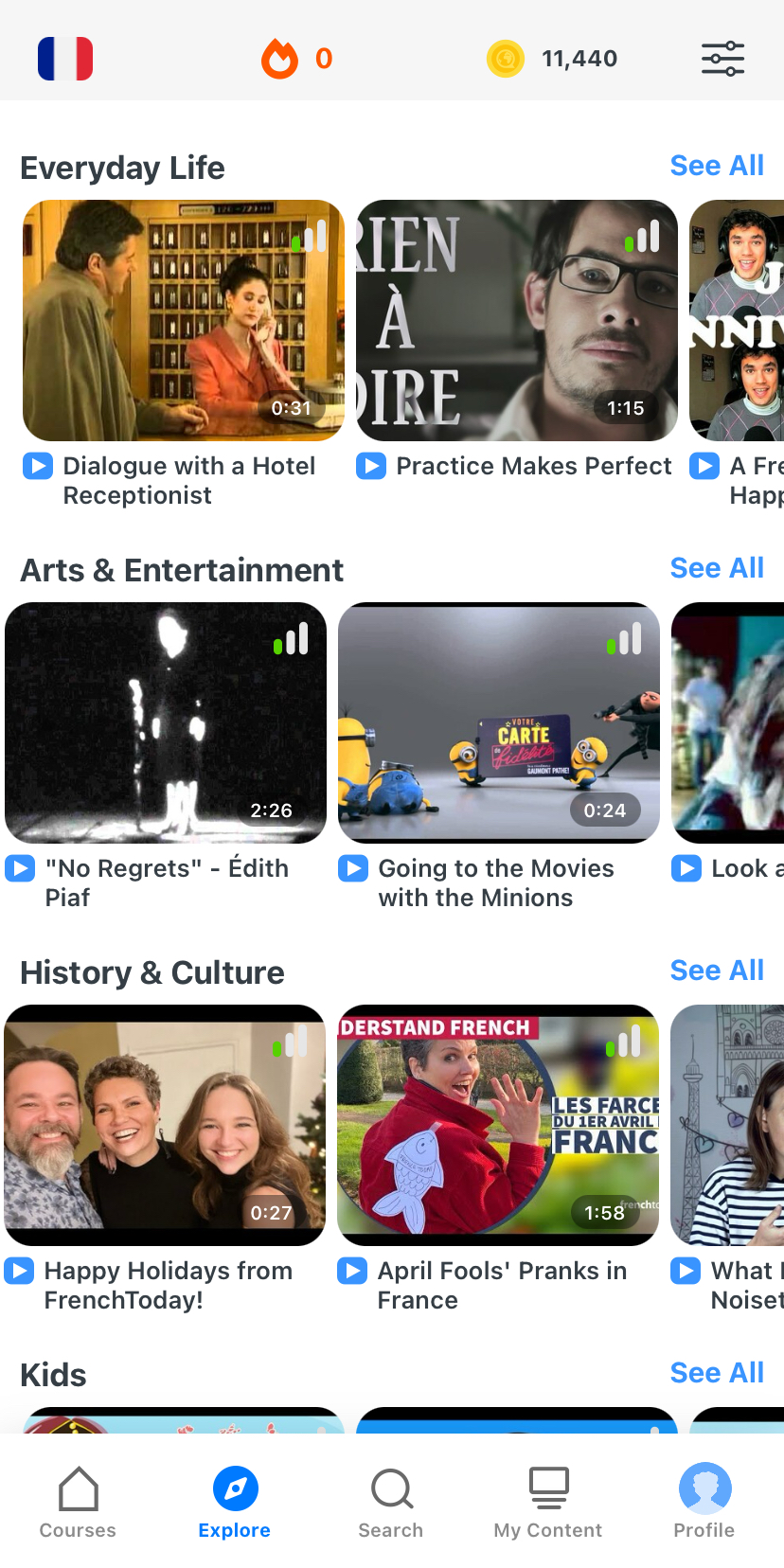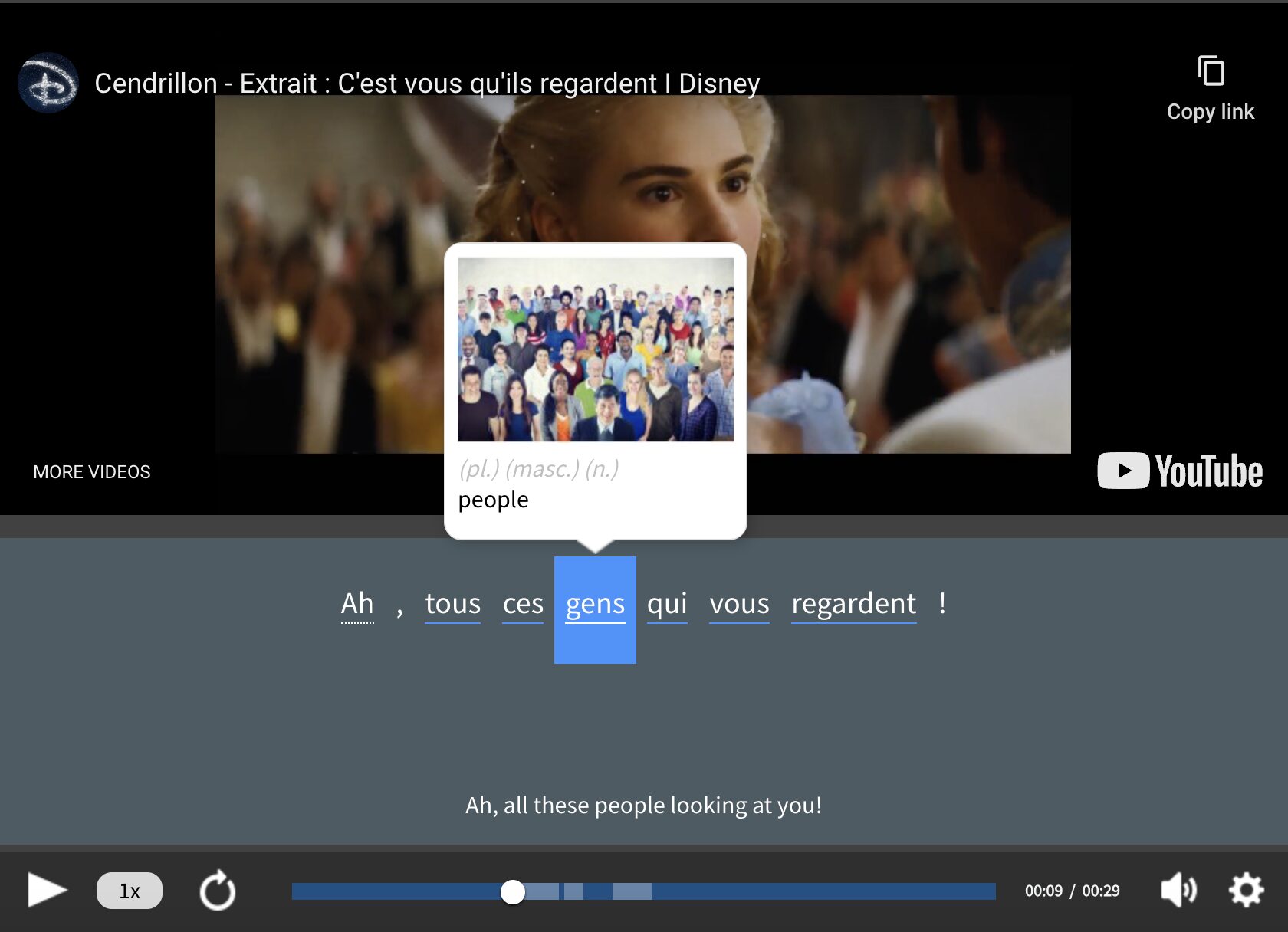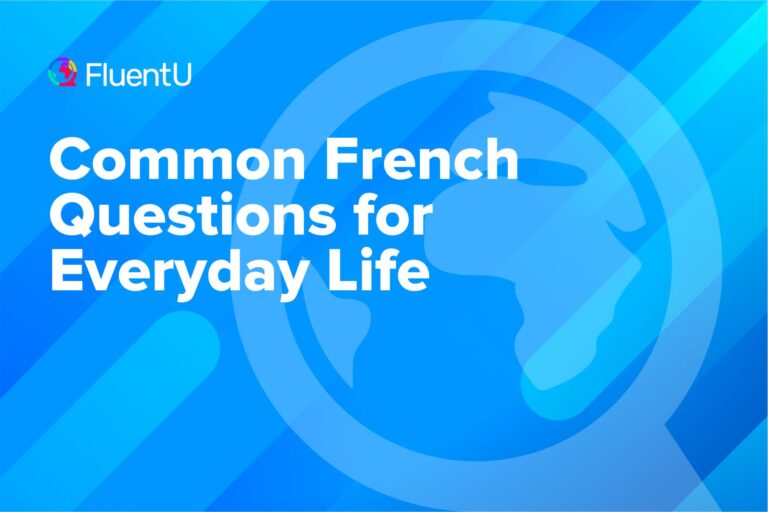Important Vocabulary for Directions in French (with Audio)

Asking for directions is one of the most important elements of basic French conversation, especially when you’re new to a French-speaking city. We can help you become the human version of French Google Maps (which, by the way, is a great resource for learning vocab and seeing how directions are written in French).
Once you master the structures, nail down vocabulary and explore enough on your own, you may even end up giving directions yourself.
Download: This blog post is available as a convenient and portable PDF that you can take anywhere. Click here to get a copy. (Download)
Most Important French Direction Vocabulary
Whether you’re heading somewhere en bus (by bus), en train (by train), en voiture (by car) or à pied (by foot), it’s crucial to know how to use the correct words and phrases.
Otherwise, how will you find anything, or, even more importantly, locate l’aéroport (the airport) or la gare (the train station) to begin your French journey?
But before you get way ahead of yourself, make sure you lock down these phrases before purchasing un billet (a ticket).
Tout droit — Straight ahead
This is one of the most important direction phrases. Used in a sentence, it’s often repeated a few times, sometimes with the tout repeated for emphasis:
“Oui, juste tout droit.” (Yes, just straight ahead.)
How it’s used:
“Où sont les toilettes ?” (Where is the bathroom?)
“Il faut aller tout droit.” (Go straight ahead.)
À droite — To the right
What gets tricky with this phrase is the pronunciation. It’s imperative to note that droit in the direction phrase tout droit is pronounced /dʀwa/, while, due to the “e” at the end (indicating that you should pronounce all the letters in the word rather than cutting off the ending), droite should be pronounced /dʀwat/, with the “t” sound at the end. (For more information on the International Phonetic Alphabet and how to read it, visit their website).
As you first begin to use these direction words, pay special attention to this, as it’s the difference between going straight and turning right. Three straights don’t necessarily make a right!
How it’s used:
“Excusez-moi, je cherche la boulangerie.” (Excuse me, I’m looking for the bakery.)
“Si vous allez tout droit, puis à droite à la Rue Verte, elle est au coin de la rue.” (If you go straight ahead, then take a right at the Rue Verte, it’s at the corner.)
À gauche — To the left
There’s no similar confusion on pronunciation here. Pronunciation is exactly like the word “gauche” in English—which means something completely different (lacking ease or grace).
How it’s used:
“Où est le pont ?” (Where is the bridge?)
“Prenez à gauche au parc.” (Take a left at the park.)
Nord, sud, ouest, est — North, south, west, east
The cardinal directions above are useful in the city, when you’re familiar with the way the streets run and you know that Montmartre and the Sacré-Cœur are north of the Louvre and the Tuileries.
A lot of locals will use the cardinal directions to tell you where to go, because, naturally, they’re familiar with the city and how it’s laid out.
Of course, if you’re spending the day out hiking, these directions will be your only option—so either way, they’re necessary.
Just be careful with the pronunciation for est—if it means east, the pronunciation changes to “ayst” (instead of the usual “ay”).
How they’re used:
“Est-ce qu’il y a un restaurant à côté ?” (Is there a restaurant close by?)
“Il y a un restaurant italien au sud de la gare.” (There’s an Italian restaurant south of the train station.)
Près de / À côté (de) — Close to
Just as important as knowing whether to turn right or left is identifying landmarks in relation to other landmarks. Près de, or “close to,” along with à côté, is a phrase that will help you do just that.
Note that the preposition de contracts with le and les to make du and des respectively. This applies to the expressions above as well as to the other expressions in this post.
How it’s used:
(See the above example for à côté.)
“L’église est près du métro.” (The church is close to the metro.)
En face de — In front of
En face de is another great direction word that will help you find your location while looking for landmarks and important places nearby.
How it’s used:
“La maison est en face de l’église.” (The house is in front of the church.)
Au coin de — At the corner of
This one’s a bit more specific, but you might hear it in the city.
How it’s used:
“Il y a un supermarché au coin de ma rue.” (There’s a supermarket on my street corner.)
Ways to Ask for Directions
Où est — Where is…
The simplest and quickest way to ask where something is located in French is to start the sentence with Où est…
Looking for the post office?
The nearest coffee shop?
The library?
It’s quick, easy to pronounce and gets straight to the point.
Est-ce que — is / are / does
This structure will be useful when you’re using basic question words like qui (who), quoi (what), quand / où (when), où (where) and comment (how), and really, when you’re asking most questions.
Est-ce que functions as the “is/are/does” in a sentence like “Where is the church?” or “How does one get to Paris?”
For example:
“Où est-ce que je peux trouver la gare ?” (Where can I find the train station?)
“Comment est-ce qu’on peut aller au centre ville ?” (How can one get to the center of the city?)
Inverted subject-verb
One way to ask a question in French is to reverse the subject and verb and connect them with a hyphen. We do something similar in English.
For example:
“Puis-je aller au magasin ?” (Can I go to the store?)
This will come in handy when asking for directions, especially when you’re wanting to avoid using the sometimes long-winded Est-ce que but still would like to be polite.
“Pouvez-vous me dire comment aller à Notre-Dame ?” (Can you tell me how to get to Notre Dame?)
Transition Words for Giving and Understanding Directions
Puis — Then
Puis is a simple transition word that is used when giving consecutive directions.
How it’s used:
“Prenez à droite, puis allez tout droit.” (Go right, then go straight ahead.)
Après — After
Après has functionality similar to puis.
How it’s used:
“Prenez à droite, et après ça, allez tout droit.” (Go right, and after that, go straight ahead.)
Enfin — Finally
If you’re receiving a set of directions that’s particularly long, you may hear enfin.
How it’s used:
“Prenez à droite, puis allez tout droit, et enfin, prenez à gauche au parc.”
(Go right, then go straight ahead, and finally, take a left at the park.)
Now that you’ve mastered French directions, you’re free to hop on your avion (plane) or bateau (boat), and start your travel adventure!
But if you’re still not feeling comfortable enough in French to figure out your way around a foreign country, you can review more everyday phrases and questions using French language learning apps or online classes.
So hopefully now, armed with all these phrases and resources, you’re feeling prepared and excited for your French vacation.
Good luck—and bon voyage !
Download: This blog post is available as a convenient and portable PDF that you can take anywhere. Click here to get a copy. (Download)
And One More Thing...
If you like learning French at your own pace and from the comfort of your device, I have to tell you about FluentU.
FluentU makes it easier (and way more fun) to learn French by making real content like movies and series accessible to learners. You can check out FluentU's curated video library, or bring our learning tools directly to Netflix or YouTube with the FluentU Chrome extension.
One of the features I find most helpful is the interactive captions—you can tap on any word to see its meaning, an image, pronunciation, and other examples from different contexts. It’s a great way to pick up French vocab without having to pause and look things up separately.
FluentU also helps reinforce what you’ve learned with personalized quizzes. You can swipe through extra examples and complete engaging exercises that adapt to your progress. You'll get extra practice with the words you find more challenging and even be reminded you when it’s time to review!
You can use FluentU on your computer, tablet, or phone with our app for Apple or Android devices. Click here to take advantage of our current sale! (Expires at the end of this month.)










